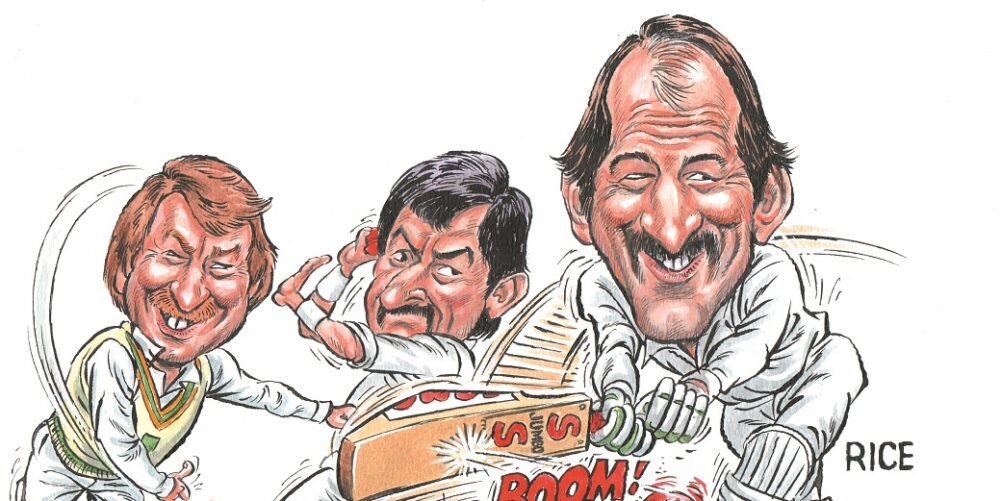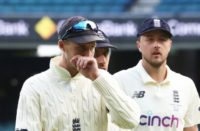Rice’s relentless charges proved too strong for all-comers
Paul Edwards casts his county net back 36 years to look at the exploits of Clive Rice’s attacking and aggressive Nottinghamshire side
If you asked cricket supporters to name the county headquarters they most enjoyed visiting, it is a fair bet that Trent Bridge would finish near the top of the poll. If you confined the choice to Test match venues, there might be even more certainty about the matter. Some would immediately plump for Lord’s, of course, but the Home of Cricket is not very homely. It often seems too hallowed to be loveable, whereas Nottinghamshire’s ground both inspires and returns affection.
Trent Bridge is three places in one: it boasts the facilities of a Test venue whilst never losing either the familiarity of a county ground or the intimacy of a club pavilion. Gatemen welcome you and the walls are crammed with pictures of great players. Although its rooms are no doubt rented out to businesses during the winter, cricket always takes priority. Nowhere is this clearer than in the broad corridor down which all players must walk on their way out to the middle; from its high ceilings are hung championship pennants, battle honours from long-gone seasons, but unforgotten campaigns.
One of the most famous of these campaigns was waged in the hot and fevered summer of 1981. In that year’s Test matches Ian Botham took an Ashes series and fashioned it into a shape of his own devising; elsewhere, in England’s great cities, there were riots on the streets…
“This town is coming like a ghost town,” sang The Specials in a moment of ominous prescience. And at Trent Bridge, Nottinghamshire’s cricketers won their county’s first title since 1929 when ‘Dodge’ Whysall’s 2,079 runs and Bill Voce’s 107 wickets helped end Lancastrian dominance. The intervening 52 years had been rather grim for Notts; between 1951 and 1977 they had finished bottom of the table eight times. Limited-overs trophies had also eluded them. The thirst for glory was very sharp.
Thankfully for Trent Bridge’s passionate and voluble faithful, Clive Rice shared that thirst and resolved it should be slaked. Reappointed captain just after the midpoint of the 1979 season – Rice had been given the job in 1977 but soon lost it because of his involvement with Kerry Packer’s World Series Cricket – the South African all-rounder was determined to restore his county’s fortunes. Prevented from playing Test matches by his country’s isolation in world cricket, “a fact which frustrates him to the point of embitterment” suggested John Lawson in the 1981 Wisden, Rice channelled his prodigious energies into English and South African domestic cricket. Nottinghamshire’s championships in 1981 and 1987 were won partly because Rice led his players from the front with such verve, yet he knew when to take advice from colleagues like Richard Hadlee or Eddie Hemmings.
It did not harm, of course, that the skipper was also one of the best cricketers in the world. Rice scored 1,462 runs, took 65 wickets and pocketed 25 catches in 1981. He hit six centuries, including an unbeaten 105 out of 143 against Malcolm Marshall at Bournemouth, and the sight of him demolishing attacks with his Stuart Surridge Jumbo demoralised opponents quite as much as it inspired his colleagues.
“There are few more powerful front-foot drivers around, but in no way have technique and timing been sacrificed for ferocity,” said Lawson in the 1981 Wisden, which featured Rice as one of its Five Cricketers of the Year. “At his best he is equally untroubled by pace or spin and his ability to hit ‘through’ the ball on turning pitches has often saved Nottinghamshire when at their most vulnerable.”
Evidence of that vulnerability was provided to a degree even in the title-winning season following Lawson’s tribute. Apart from Rice, only Derek Randall scored over 900 Championship runs in 1981, although some would argue that the difficulties of the batsmen were explained by the fact that they played half their innings on Trent Bridge pitches.
All of which brings us neatly to the accusation levelled at Nottinghamshire even as they celebrated completing their triumph with a ten-wicket defeat of Glamorgan on the penultimate day of the season. Put simply, it suggested that the new champions had finished top of the table largely because their groundsman, Ron Allsop, had prepared green, seamer-friendly wickets for Rice and Hadlee to exploit.
The evidence for the claim was that on pitches which had often favoured batsmen in previous seasons, the average first-innings score in 1981 was 149. In none of Nottinghamshire’s 11 home games did the home side bat first; Leicestershire chose to do so in the first game of the season and Rice won the toss in the other ten and inserted the opposition. The result of these tactics, so the detractors claimed, was plain: Notts won nine of their home games, losing only to Middlesex and drawing with the eventual runners-up, Sussex. Away from Trent Bridge, they managed two wins and suffered three defeats.
What may have galled the detractors most was Nottinghamshire’s shamelessness and their good fortune in winning ten tosses. No one argued that counties had not prepared wickets to suit their own attacks before, but perhaps no captain had employed the tactic quite as obviously as Rice had done. Yet those who had bothered to listen had been told what was on the cards. “We’re going to exploit every conceivable advantage of playing at home,” Rice had said at the beginning of the season.
Another view of Nottinghamshire’s strategy was put forward by the incurably civilised John Barclay in his gently gracious and fair-minded book, The Appeal of the Championship: Sussex in the Summer of 1981. Writing two decades after the season he lovingly describes and a year before Sussex won their first title, Barclay pointed out that: “Notts played great cricket, too. Clive Rice relied upon the pace bowling of himself and Richard Hadlee, followed by the spin of Eddie Hemmings, and all three of them bowled magnificently. It is true that they prepared wickets to help their bowlers, but then so did we at Eastbourne, against Derek Underwood.”
Maybe it is fortunate that while the passing of 36 summers has probably drawn the sting of the accusations against Notts, it has not diminished the memory of Richard Hadlee or Eddie Hemmings bowling their county to the title. Hadlee, using a shorter run than his youth, was an even more skilful seamer than his captain and a perfect complement to him. To his 105 wickets, the New Zealander added 742 runs. On the top deck of the Radcliffe Road stand, with DH Lawrence’s ‘country of the heart’ in the distance, folk still spend summer afternoons talking of Hadlee’s mastery of his art. Here, so the romantics argue, was a bowler to set beside Harold Larwood in Nottinghamshire’s pantheon. Very different, mark you, but just as good. “The longer Hadlee went on the craftier he grew, the more inquisitorial and versatile a bowler he became,” wrote John Woodcock, “so that he was feared more when he was 35 than when he had been 25.”
Hemmings’ off-spin, by contrast, was rarely feared, but it was always respected. Those who dismiss Nottinghamshire’s title as having been won by efforts of their overseas players need to reckon with the 84 wickets taken by Hemmings – whose accuracy and variations frequently came into their own in the second innings of games. The critics also need to weigh the importance of Randall’s 1,093 runs, or Paul Todd’s 899. Behind the stumps, Bruce French was the epitome of tidiness and lack of fuss: a wicketkeeper’s wicketkeeper. While the architects of the championship victory hailed from Johannesburg and Christ-church, the builders came from Retford, Morton and Warsop.
If one match decided the destiny of the title, it was the great draw played out by Notts and Sussex at Trent Bridge in mid August. In a game dominated by spinners, the home side replied to Sussex’s 208 with only 102; it was the only time in 1981 that they conceded a first-innings lead at home. Eventually requiring 251 to win on the last day, Notts were 174 for three before Barclay and Garth le Roux took three wickets apiece.
Left with a vital draw to play for, Hemmings and Mike Bore batted out the final minutes of the game. Bore, a batsman “quite unscathed by natural ability” according to Barclay, was struck on his back pad by Imran Khan. Plumb as can be, thought bowler and wicketkeeper. “Not out” said the umpire, Peter Stevens. There may still be Sussex supporters who spend idle moments musing on the decision.
Notts won nine of their last 11 games in 1981. Like Sussex, they won their last four on the trot and retained their lead. In the Trent Bridge dressing room Reg Simpson, the county’s former stalwart opening batsman, captain and chairman, was overcome and wept. “When I saw him in tears, I knew just how important a day it was for Nottinghamshire cricket,” said Basharat Hassan.
Other loyalists have pledged themselves in other ways. “My heart is always at Trent Bridge,” wrote the actor, Michael Jayston, in 1982. Even the gruffest Notts supporter will remember Clive Rice’s summer and nod in silent agreement.
This piece originally featured in The Cricket Paper, January 13 2017
Subscribe to the digital edition of The Cricket Paper here












